Ownership and Gatekeeping
You don’t own witchcraft – none of us do. It kind of makes me sad that I feel 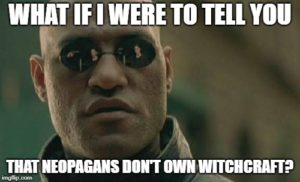 like I have to say this, but witchcraft isn’t just the domain of (predominantly) white neo-Pagans – there are forms of witchcraft all over the globe, existing in multiple worldviews. Just because you’ve created modern forms of religious witchcraft, it doesn’t mean that you somehow have a claim on it all, or that it bears any resemblance to (any) historical witchcraft. In other words, none of us get to be gatekeepers here.
like I have to say this, but witchcraft isn’t just the domain of (predominantly) white neo-Pagans – there are forms of witchcraft all over the globe, existing in multiple worldviews. Just because you’ve created modern forms of religious witchcraft, it doesn’t mean that you somehow have a claim on it all, or that it bears any resemblance to (any) historical witchcraft. In other words, none of us get to be gatekeepers here.
You know what does bear a resemblance to historical (European) witchcraft though?
Some of the shit in The Chilling Adventures of Sabrina (hereafter referred to as CAOS).
You know, that shit that some of you are getting mad about.
Look, I get it. You don’t like the inclusion of Satan/the Devil/Old Nick in a show about witches, and some of you seem to think it’s playing into a Satanic Panic mentality. But let’s be real for a moment here.
Sympathy for the Devil
First of all, the way Pagans react to the Devil/Lucifer/Satan/Old Scratch/Whothefuckever (not that they’re all the same being anyway) is ridiculous. It’s 100% Christian baggage over a being who is basically the kitchen sink of all the shit the Christians hated.

I mean, could you honestly say that you’d feel the same about the Devil if we lived in a world that had retained large polytheist populations and the Christians were ranting about this being? You probably wouldn’t. You’d probably file it away in your head that he might be worth slitting some (animal) throats over in certain situations, but could also be a royal dickbag.
And it’s not like we avoid worshipping beings capable of being royal dickbags as a collected mass of religious and spiritual movements either (see: current popularity of “fayeries” for a great and exceedingly ironic version of that). We’re actually pretty cool with that – it’s edgy even. They just have to be ‘our’ (potential) dickbags.
But a dickbag, is a dickbag, is a dickbag.
So why do we elevate one dickbag over all the others in terms of how we perceive their inherent dickbag…ness?
Could it be that despite our best efforts to Pagan ourselves the fuck up, we inherited more than a few attitudes from the dominant religion/s in our society anyway?
Yes, of course we did. None of us live in bubbles.
But that’s not the whole story – there are bullshit respectability politics at work here too.
To some degree, I can understand this. After all, we’re only a few decades out
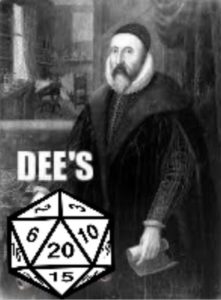
from when playing D&D could get you into trouble. But there are some very real issues with engaging in respectability politics that I think we should all be mindful of (which you can read about here).
Sabrina and Satanic Panic
Secondly, the obvious ‘hole’ in the Satanic Panic worries is that the witches from CAOS were clearly intended to be fantastical. I mean, they’re immortal (or near enough) and you’ve got people kissing the Devil’s hairy hooves, for goodness sake!
Their magic is also massively more successful – like supernatural being successful. This and the immortality element are important markers of the fantasy elements of this show. The witches here are not *meant* to be believed in in a literal sense.
And look, don’t get me wrong, we can do a lot more with magic than we  generally think. We *could* do a lot more, but most of us just aren’t there yet (you know, if we’re being real). We’ve got a lot to build and paradigms to shift before we can really get there.
generally think. We *could* do a lot more, but most of us just aren’t there yet (you know, if we’re being real). We’ve got a lot to build and paradigms to shift before we can really get there.
But none of that is inherently a bad thing. Because the Satanic Panic concern isn’t entirely misplaced; our current social climate is absolutely ripe for a resurgence of kind of awfulness.
It won’t be CAOS that will set it off though. If anything, it’ll be all the highly public grandstanding curses of public figures and groups like the NRA.
To Keep Silent
It’s one thing to network among practitioners and set up working groups – that carries very little risk. As does democratizing magical efforts via anonymous fora such as 4Chan. However, it’s quite another thing to go in front of a camera crew and ramble on about how you’re going to work malefica on people in power! (People in power who, I might remind you, enjoy a good deal of support from the kind of zealous motherfuckers who would gladly burn people like you and I had they the chance)
These public rituals have already planted those seeds in their minds too. Pastors and other sources on the right already talk about the curses against the president, and the NRA put out a video not all that long ago warning of that very thing. So in other words, they were taking that threat seriously and starting the rumblings of what could become another Satanic Panic way before CAOS came along. If you think this is going to be instigated by a Netflix show with a talking cat, then you haven’t been paying attention.
No, if anything, what will come will be because of what people within Pagan communities themselves were putting out. CAOS isn’t the problem here.
Disbelief is Our Friend
Because as galling as it might be, one of the greatest protections we could  have in times like these is disbelief. We don’t want people to believe we can do the things they associate with witchcraft. Especially not in times like these. Trust me, we probably wouldn’t like their BBQs, and it wouldn’t just be because the potato salad has raisins in it.
have in times like these is disbelief. We don’t want people to believe we can do the things they associate with witchcraft. Especially not in times like these. Trust me, we probably wouldn’t like their BBQs, and it wouldn’t just be because the potato salad has raisins in it.

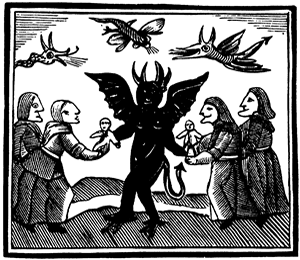



 ourselves being mobbed by mosquitoes.
ourselves being mobbed by mosquitoes.




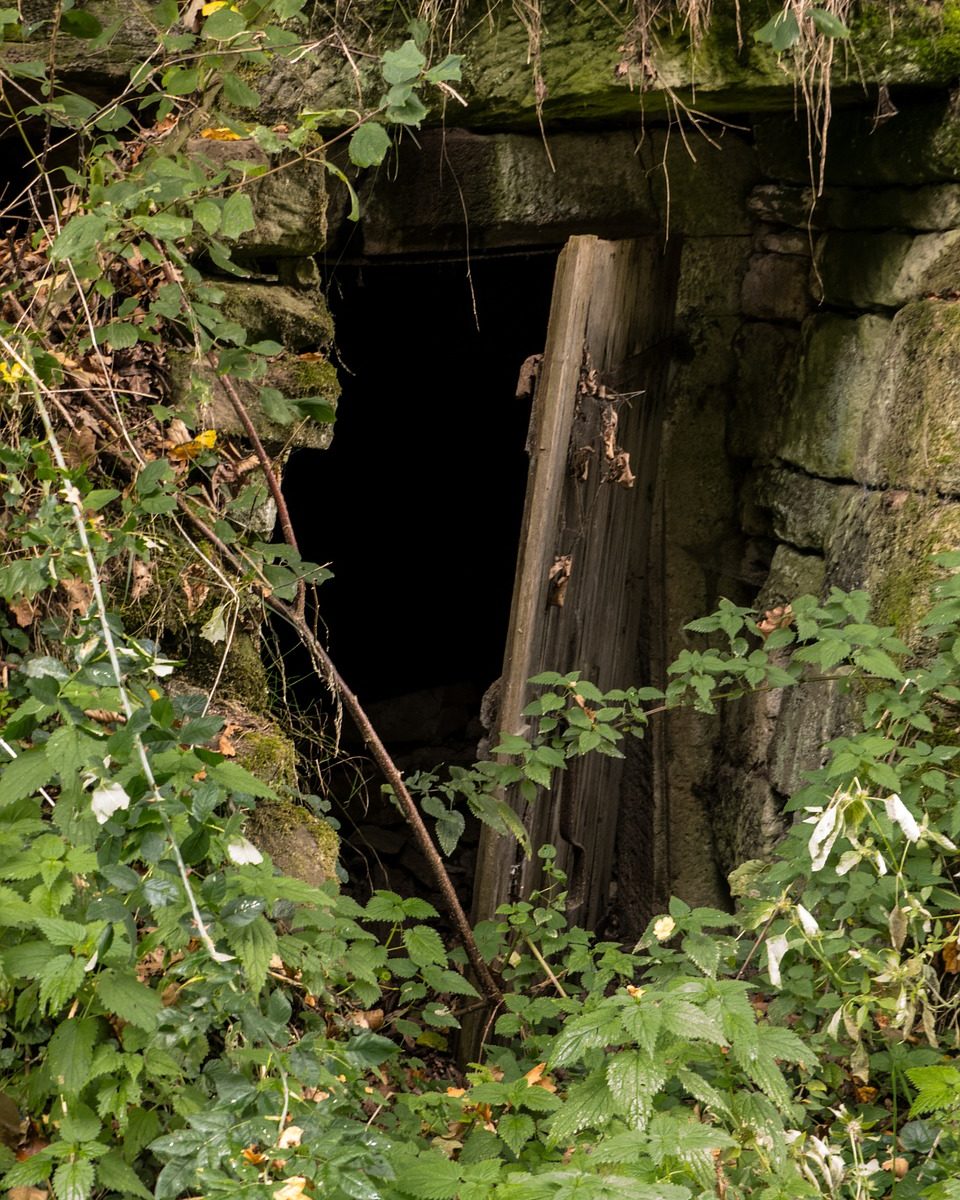





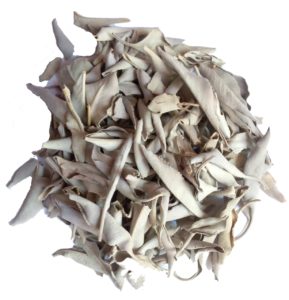


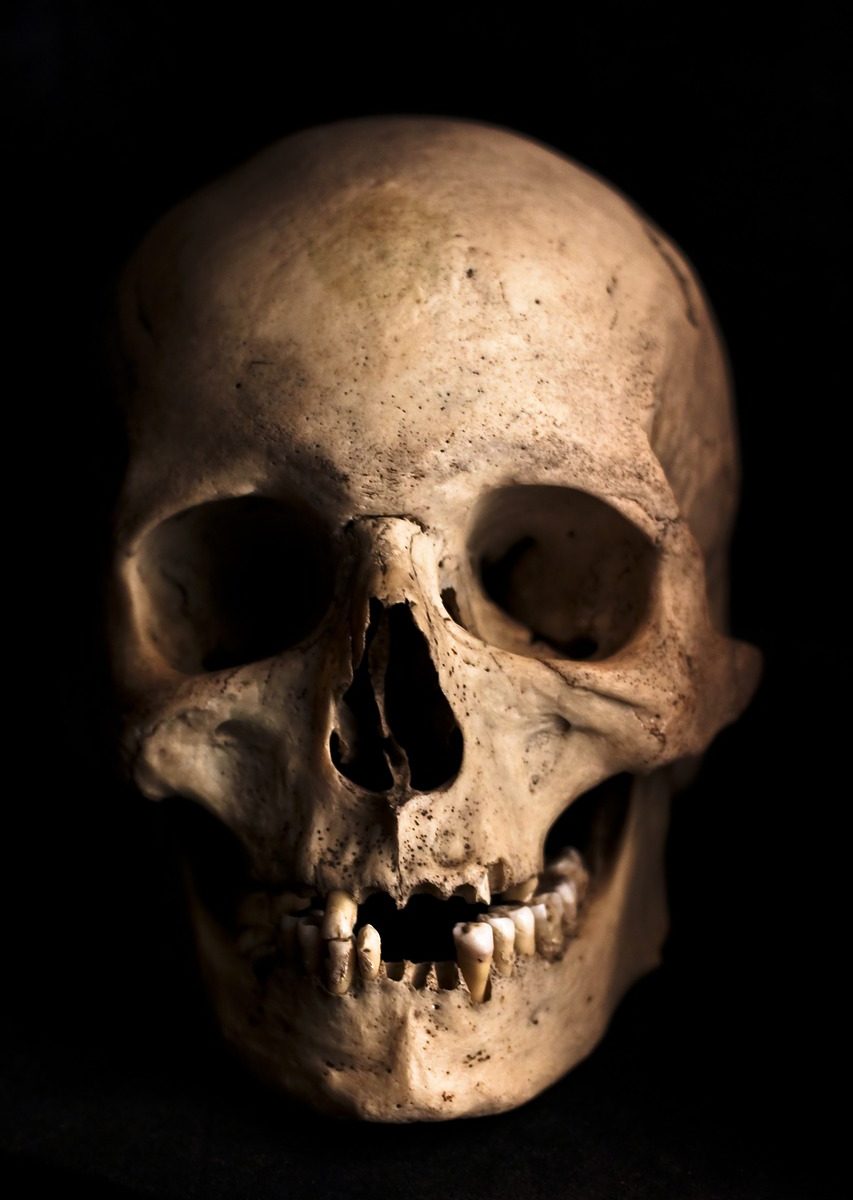

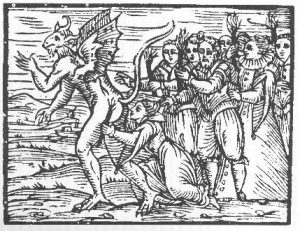

 dead.
dead. “whiteness” in this post. When I speak of “whiteness”, I speak of a construct that sits in our society like a gated community that limits its entry to those who fit certain criteria. To reiterate, this is not a post about the the intrinsic and innate, of melanin and ancestry. It is a post about a social construct which actively excludes, harms, and which I believe to be completely incompatible with Witchcraft.
“whiteness” in this post. When I speak of “whiteness”, I speak of a construct that sits in our society like a gated community that limits its entry to those who fit certain criteria. To reiterate, this is not a post about the the intrinsic and innate, of melanin and ancestry. It is a post about a social construct which actively excludes, harms, and which I believe to be completely incompatible with Witchcraft. exist. Laws both in the early colonies and Barbados instead focused on religion, setting aside freedoms for Christians and relegating non-Christians to servitude and slavery. However, as times changed and more people of color (both free and enslaved) became Christians, that legal language was changed. The goalposts were moved in order to retain power among the white landowning elite. 1697 saw the passage of the first law that restricted voting rights to only the white
exist. Laws both in the early colonies and Barbados instead focused on religion, setting aside freedoms for Christians and relegating non-Christians to servitude and slavery. However, as times changed and more people of color (both free and enslaved) became Christians, that legal language was changed. The goalposts were moved in order to retain power among the white landowning elite. 1697 saw the passage of the first law that restricted voting rights to only the white 

 Think about the voices you listen to and the voices you give space to and elevate (
Think about the voices you listen to and the voices you give space to and elevate (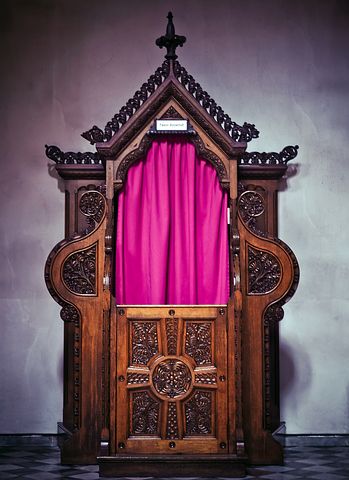




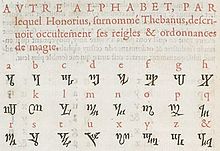 journals are anything to go by, I could back then. But now? Nope! It’s the so-called ‘Witches’ Alphabet’ (taken from Trithemius who apparently got it from a possibly mythical character), and I can’t read it.
journals are anything to go by, I could back then. But now? Nope! It’s the so-called ‘Witches’ Alphabet’ (taken from Trithemius who apparently got it from a possibly mythical character), and I can’t read it.
 living. But their visits also brought sickness, and that’s just what they brought to the people of a place called Frodis-water.
living. But their visits also brought sickness, and that’s just what they brought to the people of a place called Frodis-water. some of those laws might be. I am going to infer one right now: that our rights to this world are lost when we breathe our last.
some of those laws might be. I am going to infer one right now: that our rights to this world are lost when we breathe our last. The story of the door-courts suggests that both living and dead are equally bound by the law. We also see this reflected in the burial customs of those deemed to exist outside the protection of the law. These were often the criminals left to rot at the crossroads, those buried in unhallowed grounds, and those who were too young at the time of their passing to be formally accepted in a community (Petreman “Preturnatural Usage”). Is it any coincidence that the materia magica sought from the human body came most often from these sources? Is it also coincidence that those were the sources thought by the Ancient Greeks to carry the least miasma (Retief “Burial”)? To exist as dead inside the protection of the law is to sleep soundly – or at least it should mean that. Of course, there have always been violations as Burke and Hare could well attest.
The story of the door-courts suggests that both living and dead are equally bound by the law. We also see this reflected in the burial customs of those deemed to exist outside the protection of the law. These were often the criminals left to rot at the crossroads, those buried in unhallowed grounds, and those who were too young at the time of their passing to be formally accepted in a community (Petreman “Preturnatural Usage”). Is it any coincidence that the materia magica sought from the human body came most often from these sources? Is it also coincidence that those were the sources thought by the Ancient Greeks to carry the least miasma (Retief “Burial”)? To exist as dead inside the protection of the law is to sleep soundly – or at least it should mean that. Of course, there have always been violations as Burke and Hare could well attest. the holy powers, but fire also played an important role in property ownership too. For the Norse, carrying fire sunwise around land you wished to own was one method of claiming that land (LeCouteux 89), and under Vedic law new territory was legally incorporated through the construction of a hearth. This was a temporary form of possession too, with that possession being entirely dependent on the ability or willingness of the residents to maintain the hearthfire. For example, evidence from the Romanian Celts suggests that the voluntary abandonment of a place was also accompanied by the deliberate deconstruction of the hearth. And the Roman state conflated the fidelity of the Vestal Virgins to their fire tending duties with the ability of the Roman state to maintain its sovereignty. The concept of hearth as center of the home and sign of property ownership continued into later Welsh laws too; a squatter only gained property rights in a place when a fire had burned on his hearth and smoke come from the chimney (Serith 2007, 71).
the holy powers, but fire also played an important role in property ownership too. For the Norse, carrying fire sunwise around land you wished to own was one method of claiming that land (LeCouteux 89), and under Vedic law new territory was legally incorporated through the construction of a hearth. This was a temporary form of possession too, with that possession being entirely dependent on the ability or willingness of the residents to maintain the hearthfire. For example, evidence from the Romanian Celts suggests that the voluntary abandonment of a place was also accompanied by the deliberate deconstruction of the hearth. And the Roman state conflated the fidelity of the Vestal Virgins to their fire tending duties with the ability of the Roman state to maintain its sovereignty. The concept of hearth as center of the home and sign of property ownership continued into later Welsh laws too; a squatter only gained property rights in a place when a fire had burned on his hearth and smoke come from the chimney (Serith 2007, 71). fires burning. To maintain the hearth was to maintain possession of property, and to maintain the hearth, a woman was required. (Or several, if you happen to be the Roman state.)
fires burning. To maintain the hearth was to maintain possession of property, and to maintain the hearth, a woman was required. (Or several, if you happen to be the Roman state.)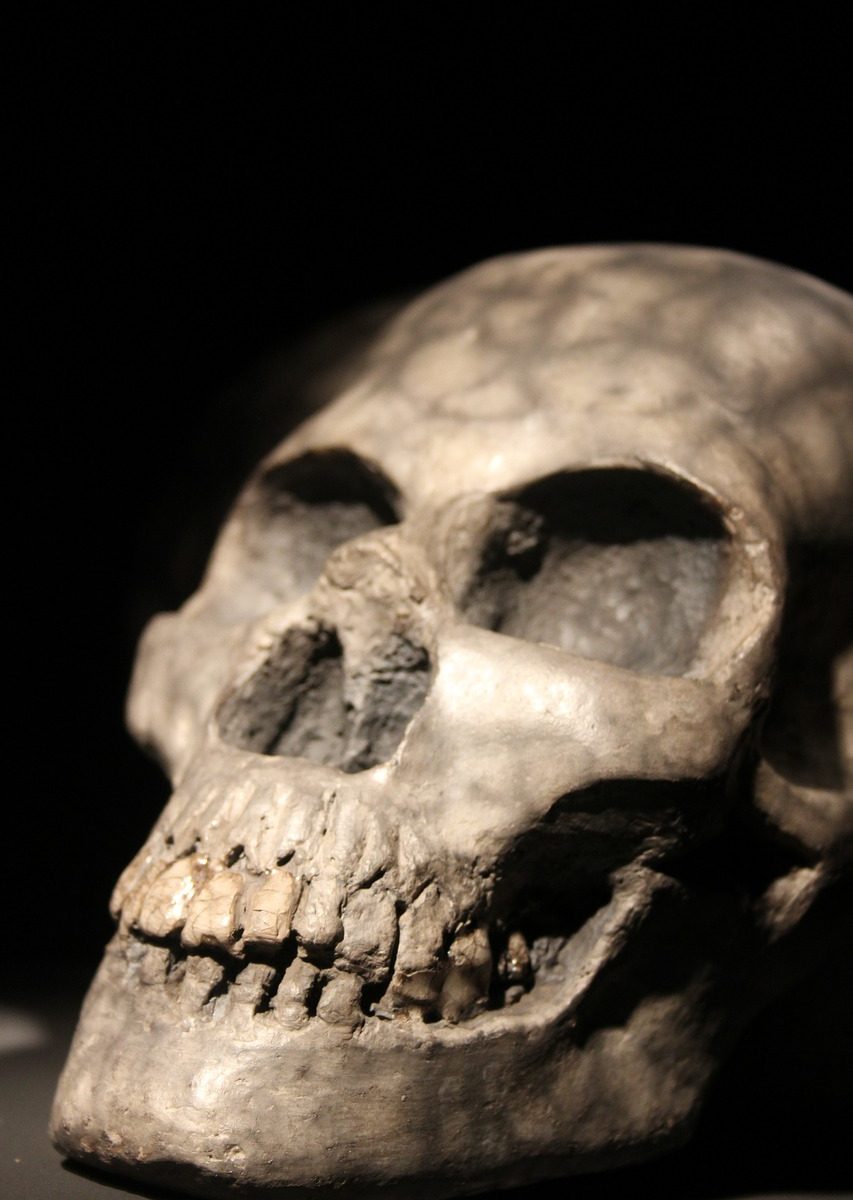

 about that but I don’t.
about that but I don’t.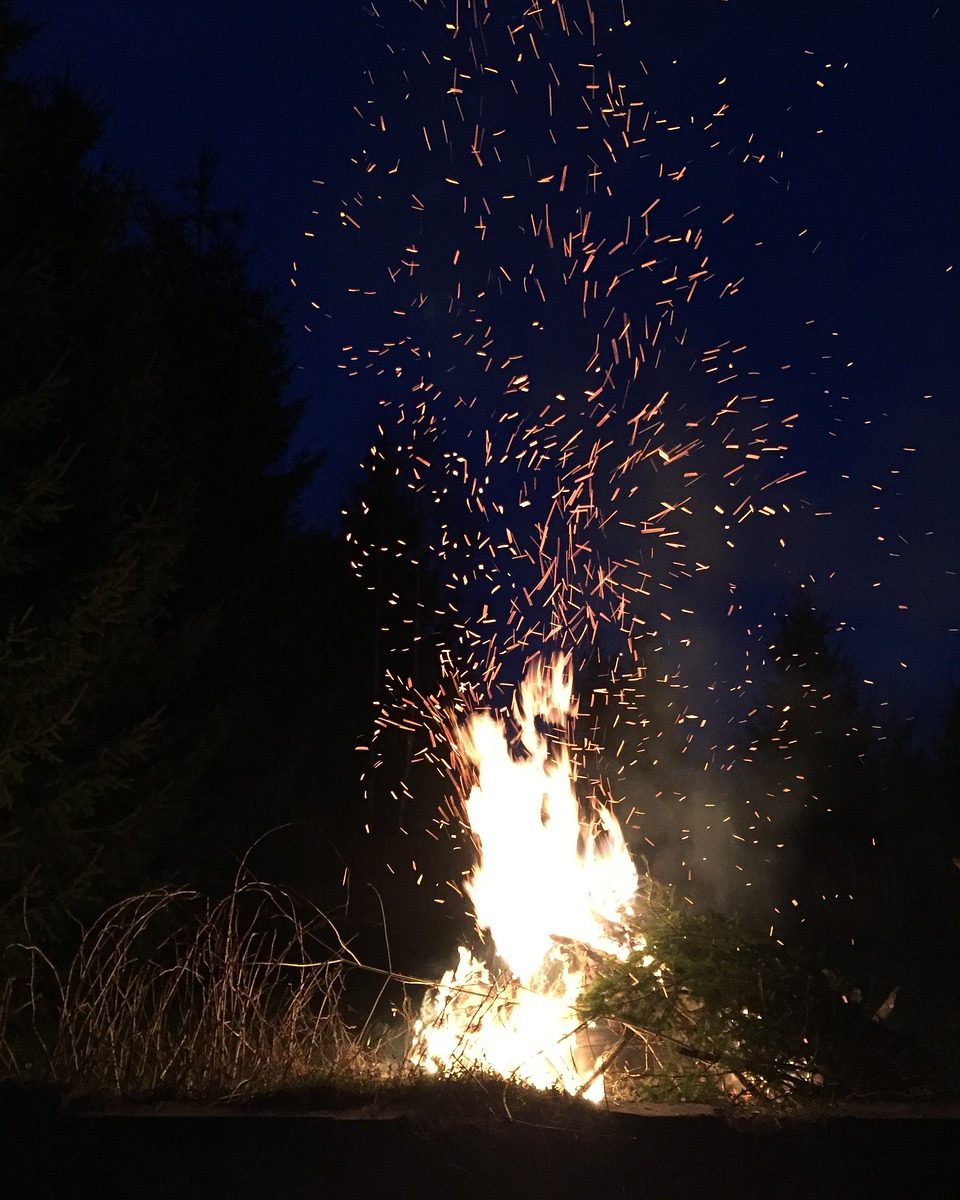
 like to ask you all how you’re feeling. So how are things?
like to ask you all how you’re feeling. So how are things? Some of the most common environmental factors that lead to this are things like “psychic impressions” left by horrid historical events; the influence of celestial bodies (as the aforementioned example of the lunar cycle); the time of year (liminal points especially); strong emotions from other humans; and especially strong emotions from other humans en masse. Of course, the degree to which these things will affect you very much depends on your personal level of sensitivity, and the most sensitive and empathic typically themselves more acutely affected than others.
Some of the most common environmental factors that lead to this are things like “psychic impressions” left by horrid historical events; the influence of celestial bodies (as the aforementioned example of the lunar cycle); the time of year (liminal points especially); strong emotions from other humans; and especially strong emotions from other humans en masse. Of course, the degree to which these things will affect you very much depends on your personal level of sensitivity, and the most sensitive and empathic typically themselves more acutely affected than others.

 good to try and burn purifying récels (incense) around your home such as either mugwort, or a rosemary/vervain/juniper mixture. This smoke can also be used for the self too (I like to burn it in a cast iron Dutch oven and just stand over it so that I’m enveloped by the smoke).
good to try and burn purifying récels (incense) around your home such as either mugwort, or a rosemary/vervain/juniper mixture. This smoke can also be used for the self too (I like to burn it in a cast iron Dutch oven and just stand over it so that I’m enveloped by the smoke).